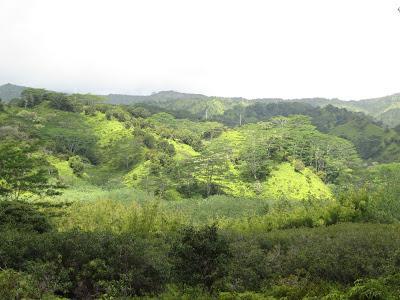
Peaceful Valley by Brad Gibson
Himsa in Sanskrit means violence, which is defined as the intentional use of force or power on self or against a person or a group that results in a physical/psychological harm, mental disturbance, injury or death. Going by this definition, there is no difference between a person who is harboring severe judgment and negativity towards self or others and a person who walks with a gun into a classroom and randomly shoots at the students. Both have committed himsa or violence albeit to different degrees. We have also have heard or witnessed acts of himsa perpetrated in yoga studios as well.Violence of any kind has profound effects on the health of an individual. Studies have shown the following:
- The stress of being in an abusive relationship has the obvious physical and psychological impact: it often increases one’s vulnerability to illness and may cause the victim to be more susceptible to disease.
- Battered victims experience depression, feelings of low self-esteem and helplessness coupled with somatic complaints.
- Chronic abuse causes serious psychological harm. Victims experience panic disorders, phobias, anxieties and depression that may last for several years. Their ability to trust and form emotional attachments are severely impacted.
- Victims often complain of enduring the effects of violence over many years and some even develop extreme symptoms years later in response to major life stressors.
ahimsa pratishthayam tat vaira-tyagah
As a Yogi becomes firmly grounded in non-injury (ahimsa), other people who come near will naturally lose any feelings of hostility — trans. by Swami Jnaneshvara.
Going by the above translation, ahimsa would mean physical, mental, and emotional non-violence towards self and others. For those who are always in contact with individuals who experience natural inner peace and a non-harming attitude, there is a tendency for them to give up their hostilities, ill will or aggression in return. It is a natural process that everyone experiences in the presence of a truly non-violent person.
How does one cultivate ahimsa? Empathy and compassion are two excellent tools to foster ahimsa as they allow us to accept events as they are and act with an open and loving heart. Empathy and compassion replace violent tendencies with kindness, acceptance and love. Practicing it on oneself helps to cultivate the same feelings towards others. So how about cultivating some ahimsa in our lives starting now!
Kindly and non-violently,
Ram

